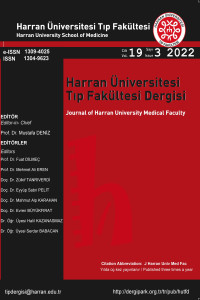Research Article
Case Report
Issue Editorial Board
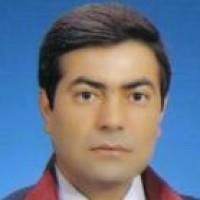
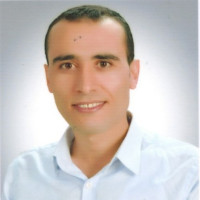
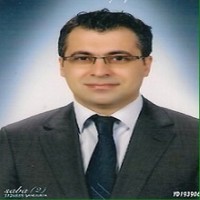



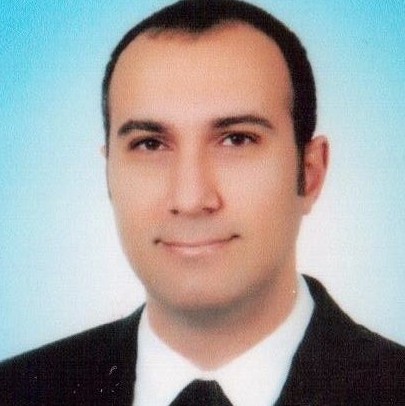
 0000-0003-4671-4028
0000-0003-4671-4028
Aim & Scope
Journal of Harran University Medical Faculty (e-ISSN: 1309-4025 - ISSN: 1304-9623) is an open access journal that is the official publication of Harran University Faculty of Medicine. It aims to contribute to medical science by publishing high quality scientific articles on general medical subjects.
Journal of Harran University Medical Faculty (e-ISSN: 1309-4025 - ISSN: 1304-9623) is a multidisciplinary peer-reviewed, free journal that publishes articles on general medical topics. It was first published in 2004. Articles are accepted in Turkish or English. The Journal of Harran University Medical Faculty accepts publications from all over the world. The publications are evaluated by two referees in terms of original information, ideas and presentation. The Journal of Harran University Medical Faculty is published 3 times a year, in April, August and December of each year.
Author Guidelines
Instructions to Authors
The journal is a scientific publication of Harran University Faculty of Medicine. Please entirely read the instructions discussed below before submitting your manuscript to the journal. The Journal of Harran University Medical Faculty publishes original articles on clinical or experimental work, case histories reporting unusual syndromes or diseases, technical and educative reviews, recent advancement of knowledge of the medical sciences with original images, questionnaires of defining disease, and letters to the editor.
Final recommendation for publication is made by the editorial board and at least two independent reviewers. The copyrights of articles accepted for publication is belonged to journal. This is determined by the assignment of copyright statement, signed by all authors. The journal is published three times in a year. The language of the journal is Turkish and/or English. Manuscripts submitted to the journal should not be published before or not under consideration elsewhere (in the case of previous oral or poster presentation of the paper at scientific meetings author should inform the journal). The full responsibility of the articles (ethic, scientific, legal, etc.) published in the journal belong to the authors. If the article is rejected, the manuscript and any related supplements (photographs, tables, figures, diskette etc.) will not be returned. If the paper is not prepared in conformity with the writing instructions, decision for its evaluation will be made by the members of the editorial board.
WRITING INSTRUCTIONS
Submitted manuscripts should be prepared using Microsoft Word program. All manuscripts, figures and pictures must be submitted electronically. Authors should ensure that (apart from the title page) the manuscript should contain no clues about the identity of authors and institution where the study was performed.
All papers should be arranged on the basis of following sequence:
1. Title page,
2. Turkish abstract,
3. English abstract,
4. Text of the article,
5. References,
6. Table(s),
7. Figure(s) and illustration’s)
8. Figure legend(s)
In the original articles number of words should not exceed 4000 (except abstract, references, tables, figures and legends) for the text of article and 400 for the abstract. Upper limit for reference number is 40, and this limit is 10 for tables and figures. Limits are summarized in the table below. Case reports should be composed of Turkish title, English title, Turkish and English abstracts, introduction, case report, discussion and references. The number of typewritten pages should not exceed 8 in case reports. Advancements in technical and medical topics and questionnaires of original issues should not exceed 2 typewritten pages
* except abstract, table, figure and legends
** no limitation
PREPARATION OF MANUSCRIPT
Title Page
Title of the a r t I c l e should not exceed 100 character s in ori g i n a l articles and 80
Type Word limit Abstract Word limit Tables and figures limit Reference limit
Original article 4000* 400 10 40
Case report 2000* 200 2 10
Letter to editor 500 2 5
Image presentations 300 2 3
Review** - - - -
characters in case reports. Title should be written both in English and Turkish. The first and last names for all contributors designated as author should be written clearly. Apart from multidisciplinary studies, number of authors should not be more than 8 in original articles, 6 in case reports, 2 in letters to editor. Subsequently, address of the institution where the study was performed should be written clearly. If the study was previously presented in any scientific meeting, name and date (as day-month-year) of the organization should be written. The name and mailing address of the corresponding author, accompanied by telephone and fax numbers, and e- mail should be written at the bottom of title page.
Abstracts
Abstracts should be given in separate sheets. English title should be used for English abstracts. No title is required for Turkish abstracts. The abstracts should not exceed 400 words in original articles and 200 words in case reports. The abstracts should be composed of “Amaç, Gereç-yöntem, Bulgular, Sonuç” in Turkish original articles, and of “Back-ground, Methods, Results, Conclusion” in English original articles. There is no requirement to these sections in case reports. Turkish and English key words should be listed at the bottom of the abstract page in original articles and should not be more than 5 words. In selecting key words, authors should strictly refer to the Medical Subject Headings (MeSH) list of the Index Medicus. Turkish key words should be selected f r o m T u r k i s h S c i e n c e Te r m ("http://www.bilimterimleri.com/) The abbreviations should not be used in the abstract.
Text
Text is composed of Introduction, Materials and methods, Results and Discussion.
Introduction: The matter and purpose of the study is clearly defined.
Materials and methods: This should include the date and design of the study, the setting, type of participants or materials involved, a clear description of all interventions and comparisons, and the statistical analysis. Instructions to Authors Type Word limit Abstract word limit Tables and figures limit Reference limit Original article 4000* 400 10 40 Case report 2000* 200 2 10 Letter to editor 500 2 5 Image presentations 300 2 3 Review** - - - - V
Results: Collected data and results of statistical analysis should be outlined in this section.
Discussion: The discussion section should include interpretation of study findings and results should be considered in the context of results in other trials reported in the literature.
All written content should be prepared in conformity with grammar and punctuation rules. Avoid abbreviations whenever possible; in case of necessary, it should be given in parentheses when they are first used. References, figures, tables and illustrations should be consecutively numbered in the order in which they have been cited in the text. All measurement units in the text should be used in accordance with international standards for units of measurement.
References
References should be given in a separate sheet with double spaced. References should be consecutively numbered in the order in which they are first mentioned in the text using Arabic numerals (in parentheses). Reference number should be placed at the end of sentence before the period. If there are multiple references number use “,” between them and “-” should be inserted between digits when three or more consecutive references are used [e.g. (1,2), (1-3)]. Journal references should include the following information: year, volume, first and last pages of article. Book references should include only year and first and last pages of the article. Authors in the references should be cited with last names and first initials. Journal’s title should be abbreviated in conformity with the Index Medicus system. References should be cited as per the examples below.
Journal references:
1) Kocakuşak A, Yücel A.F, Arıkan S. Karına nafiz delici-kesici alet yaralanmalarında rutin abdominal eksplorasyon yönteminin retrospektif analizi. Van Tıp Dergisi 2006; 13(3): 90-96.
2) Goldstein PJ. The drugs/violence nexus: A tripartite conceptual framework. J Drug Issues 1985; 15(4): 493-506.
Book references: 1) Krogman WM, İşcan MY. The Human Skeleton in Forensic Medicine. Second ed. Springfield Illinois: Charles Thomas Publisher, 1986: 189-243.
2) Beard SD. Gaines PA, eds. Vascular and Endovascular Surgery. London : WB Sounders, 1998: 319- 29.
Chapter in book references: 1) Soysal Z, Albek E, Eke M. Fetüs hakları. Soysal Z, Çakalır C, ed. Adli Tıp, Cilt III, İstanbul Üniversitesi Cerrahpaşa Tıp Fakültesi Yayınları, İstanbul, 1999: 1635- 1650.
2) Freidman WF. The intrinsic properties of the developing heart. In: Sonneblick E, Leschi M, Friedman WF, eds. Neonatal Heart Disease. New York: Grunestratton, 1999: 21-50.
Tables
Tables should be printed on a separate sheet with double spaced. Each table should contain a table number in the order in which they are first mentioned in the text and title that summarizes the whole table. All abbreviations used in the table should be alphabetically arranged and defined under the table (e.g., PS; pulmonary stenosis, VSD: ventricular septal defect). Tables should not duplicate information given in the text. Apart from upper and lower margins, vertical and horizontal rules should not be used in the tables.
Figures and Illustrations
Figures and illustrations should be named and numbered. Figures should be provided with a minimum of 300 dots per inch (dpi) in JPEG format and should be clear. Figures must be submitted online during manuscript submission. Figures embedded into article will not be accepted. If authors accept to charge extra cost, colored publication of the illustrations is possible; otherwise all illustrations will be published as black and white. All abbreviations used in the figures and illustrations should be alphabetically arranged and defined under the footnote. Technique and ratio of magnification for photomicrographs should be indicated.
The editorial board has the right to make any revisions on the manuscript unless such changes interfere with the scientific data presented.
ETHICAL CONSIDERATIONS
Manuscripts submitted for publication must contain a statement indicated that all prospective human studies have been approved by the ethics Committee, have therefore been performed in accordance with the ethical standards of 2008 Declaration of Helsinki. It should also be clearly stated that all persons gave informed consent prior to their inclusion in the study. Studies involving animals must have the animal ethics committee approval and be conducted in accordance with the care and use of laboratory animals standards.
REVISION AFTER REFEREE REPORT
Authors should point by point reply the items on which revision is demanded via referee report to the reserved box in the online system (http://tip.harran.edu.tr/tipdergisi). Additionally they should do necessary changes in article and highlight them and submit online again.
FINAL CHECKING
1. All pages have been numbered beginning form first page of the text.
2. Assignment of copyright form has been properly filled and signed.
3. The abstract should not exceed 400 words in original articles and 200 words in case reports.
4. The title has been separately written in Turkish and in English.
5. References is in conformity with the instructions.
6. All abbreviations used in tables, figures and illustrations have been defined.
The most up-to-date version of the guide in question is available at www.icmje.org.
Ethical Principles and Publication Policy
Ethical Principles and Publication Policy
PUBLICATION PRINCIPLES:
Journal of Harran University Faculty of Medicine Committee on Publication Ethics (COPE), Directory of Open Access Journals (DOAJ), Open Access Scholarly Publishers Association (OASPA), Budapest Open Access Initiative (BOAI), and World Association of Medical Editors and International Committee of Medical Journal It applies the publishing principles stipulated and accepted by the Editors (ICMJE) organizations. In addition, Harran University Medical Faculty Journal applies the publishing principles determined by DergiPark under the umbrella of TÜBİTAK ULAKBİM.
1. The Journal of Harran University Faculty of Medicine (e-ISSN: 1309-4025 - ISSN: 1304-9623) is a multidisciplinary peer-reviewed journal that publishes articles on general medical issues. It started to be published in 2004. Articles are accepted in Turkish or English.
It is published 3 times a year, in April, August and December.
ULAKBİM TR Index is included in Turkey Citation Index. No fee is charged from the authors during the evaluation process and publication phase. All articles submitted for publication are evaluated by the editor, editorial advisory board and referees. All articles in the journal are open access and can be downloaded free of charge.
2. In our journal, original articles, reviews, case reports and short papers written in Turkish/English are being evaluated for publication.
3. Only scientific research studies of original nature are included. Qualities such as being new, suggesting a new method, or adding a new dimension to previously existing knowledge are sought.
4. Manuscripts submitted for publication are evaluated by at least two external referees as double-blind; The acceptance-rejection decision is made by the Editorial Board. Invited review articles are limited to a few and no refereeing requirement will be sought. Invited compilation is published after editor approval.
5. The works requested to be published must not have been published anywhere or sent to any journal for publication. For this, a cover letter is requested from the responsible author when they send the article (See: Nature Research).
6. All responsibility of the works belongs to their respective authors. The works should be prepared in accordance with the internationally accepted scientific ethical rules. A copy of the Ethics Committee Report must be attached to all studies that require ethical approval.
7. In the articles sent to our journal, forgery (fabrication), falsification, plagiarism (plagiarism, plagiarism), slicing (salamization), unfair signature (gift authorship, gift authorship), ghost authorship, publishing a publication more than once Responsibility for compliance with international ethical principles such as (duplication) belongs to the authors. If such a situation is detected before or after publication in any research, the article is withdrawn from the journal. See: COPE.
8. For the works accepted to be published in our journal, the signed Copyright Transfer Form must be uploaded to the system.
9. Manuscripts submitted for publication in our journal should be prepared according to journal writing rules. The writing rules can be accessed from the link https://dergipark.org.tr/tr/pub/hutfd/writing-rules.
10. Necessary changes should be made by the author within 10 days after minor changes in the article decision, 20 days after major changes, and 30 days after the revision that needs to be rewritten. If the requested corrections are not made by the author on time, the editor writes a warning letter to the author. If there is a delay again, the article will be rejected.
The publication of a peer-reviewed journal requires the continued work, responsibility, obligation and cooperation of interested parties. Interested parties: Authors, Reviewers, Editors and Board Members. Editors are responsible for maintaining/monitoring publishing ethics and keeping academic records.
ETHICAL PRINCIPLES:
The Journal of Harran University Faculty of Medicine is a peer-reviewed scientific journal based on high ethical and editorial standards. Editorial review is based on the recommendations of the Committee on Publication Ethics (COPE). Cope's recommendations for ethical mandate, responsibilities, and open access in this journal are considered. See: Committee on Publication Ethics (COPE) and the Turkish version of COPE in DergiPark
No fee is charged for the articles and other processes uploaded to the Journal of Harran University Faculty of Medicine and all accepted articles are published, read and downloaded free of charge. Poster or oral presentations presented at scientific meetings held in the fields of health can be published as supplementary issues. For this reason, Harran University Medical Faculty Journal has adopted ICMJE (International Committee of Medical Journal Editors), BOAI (Budapest Open Access Initiative) and DOAJ (Directory of Open Access Journals) as its principles. All Harran University Faculty of Medicine Journal members and authors are in compliance with the basic rules and recommendations set by COPE.Must be aware of the relevant rules.
It is mandatory to obtain permission from the Ethics Committee / Institutional Review Board for all studies on humans and test animals. “Documents and information requested for studies requiring ethics committee approval” should be uploaded to the system. Upload the ethics committee approval in PDF or JPEG format (Not required for case report-series and review articles). In case reports, it is necessary to include information that the informed consent/consent form was signed in the article. In studies that require ethics committee permission, information about the permission (name of the committee, date and number) should be included in the Material and method section and also on the first/last page of the article. In addition, in the Material and method section, the statement "Declaration that the study was carried out in accordance with the international declaration, guideline, etc." should be included.
AUTHOR:
All authors must make significant contributions to the research. Subjects such as plagiarism, forgery, distortion, unfair authorship are the responsibility of the authors. If detected, the article will be rejected. An article in progress cannot be sent to another journal or published. It is the author's responsibility to upload "documents and information requested for studies requiring ethics committee approval" to the system. Our journal made it mandatory for the authors to define the ethics committee that approved the study. In addition, the submitted article is expected from the authors to comply with the standards recognized below.
Declaration of Helsinki
US Federal Policy for the Protection of Human Subjects
European Medicines Agency Guidelines for Good Clinical Practice
Scientific research should comply with the principles described in the Higher Education Institutions Scientific Research and Publication Ethics Directive, the internationally recognized Declaration of Helsinki, the US Federal Policy on the Protection of Humans and the European Medicines Agency's Good Clinical Practice Guidelines. Research ethics COPE, ICMJE and experiments on humans, as well as the international guidelines set out in the Declaration of Helsinki for Animal Experiments and Horizon 2020 should be followed.
Studies Requiring Ethics Committee Permission are as follows.
All kinds of research conducted with qualitative or quantitative approaches that require data collection from the participants by using survey, interview, focus group work, observation, experiment, interview techniques.
• Use of humans and animals (including material/data) for experimental or other scientific purposes,
• Clinical studies on humans,
• Research on animals,
• Retrospective studies in accordance with the law on the protection of personal data,
Moreover;
• Indicating that “informed consent form” was taken in case reports,
• Obtaining and specifying permission from the owners for the use of scales, questionnaires, photographs belonging to others,
Statement that copyright regulations are complied with for the intellectual and artistic works used
JUDGE:
Articles submitted for publication are evaluated by at least 2 blind referees. The peer-review process involves seeking advice on individual manuscripts from reviewers' experts in the field. The referees have no conflict of interest and the articles are kept confidential. The referee evaluation results are reviewed by the editor and the author is informed about the decision about the article. The names of the referees who evaluated the articles are not notified to the authors. Reviewers also cannot see the names of the authors. It is a general principle that the articles that are not considered sufficient should be developed in line with the recommendations of the referees. An invitation is sent to the referee through the journal system. The referee accepts or rejects the invitation within 7 days. If accepted, the evaluation process is 15 days. If he/she cannot complete the evaluation within 15 days, additional time is given if he/she wishes.
EDITOR:
Journal Editors are committed to complying with all COPE Code of Conduct standards. Editors should not have a conflict of interest regarding the accepted or rejected articles. Only articles that will contribute to the field should be accepted. Manuscripts that do not reach the intended level, studies that are not considered scientifically sufficient are rejected by the editor without explaining the reason. An invitation is sent to the referee through the journal system. The referee accepts or rejects the invitation within 7 days. If accepted, the evaluation process is 15 days. If he/she cannot complete the evaluation within 15 days, additional time is given if he/she wishes.
JOURNAL MANAGEMENT:
Journal management and editors will take the necessary steps to prevent the publication of articles that are determined to be abusive on the topics mentioned above for the authors. In no event should the journal or its editors encourage or allow such abuses to occur. If the publisher or editor of the journal is notified of any alleged research misconduct, the publisher or editor will deal with the allegations appropriately.
The journal will allow articles to be retracted or corrected as needed. The journal is willing to publish corrections, clarifications, retractions and apologies as needed.
Price Policy
No fee is charged from the authors during the article evaluation and publication process.
Harran Üniversitesi Tıp Fakültesi Dergisi / Journal of Harran University Medical Faculty

